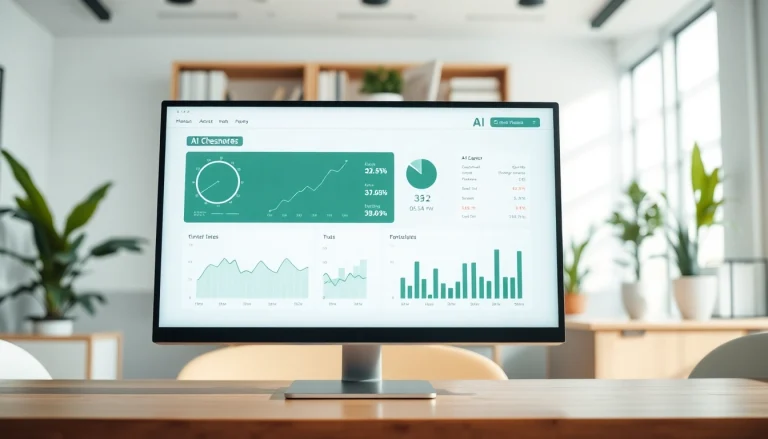
Introduction to Export Tariffs
Export tariffs are taxes imposed by governments on the goods being shipped out of a country. Their primary role is to regulate trade, control the flow of goods, and sometimes protect domestic industries from foreign competition. The implications of these tariffs are vast, impacting not just revenues at the national level but also the pricing strategies of businesses involved in international trade. Understanding export tariffs is essential for export-related businesses and policymakers alike, especially in today’s ever-evolving global trade landscape. As nations rethink their international trade policies, an in-depth examination of export tariffs reveals critical insights into their implications and strategies for adaptation.
Definition and Purpose of Export Tariffs
Export tariffs are essentially a form of taxation applied to goods as they leave a country. The main purpose of these tariffs can be summarized as follows:
- Revenue Generation: Governments utilize export tariffs as a method to collect revenue, especially in countries where other forms of taxation are limited.
- Market Control: By making exports more expensive, governments can control the quantity of goods leaving their borders, which may be critical for preserving resources.
- Protection of Domestic Industries: Export tariffs can be used strategically to protect emerging or struggling local industries from global competition, allowing them time to grow.
- Trade Negotiation Leverage: Countries may impose tariffs to gain leverage in trade negotiations, using tariffs as a bargaining chip in international agreements.
How Export Tariffs Affect International Trade
The application of export tariffs can have several profound effects on international trade:
- Increased Costs: For exporters, tariffs raise costs and can lead to higher prices for consumers in importing countries. This may make exported products less competitive compared to local alternatives.
- Shift in Trade Routes: Export tariffs can influence trade dynamics, prompting exporters to seek new markets or change their existing supply chains to minimize tariff impacts.
- Trade Relations: High levels of tariffs between countries can lead to strained relations and possibly trade wars, where escalations in tariffs provoke retaliatory measures.
- Market Access Limitations: Exporters may face limitations in market access due to tariffs, leading to boundaries that hinder smooth trade activities.
Key Historical Examples of Export Tariff Implementation
Throughout history, numerous examples illustrate the varied applications of export tariffs. Some notable instances include:
- U.S. Tariffs on Corn and Wheat in the 19th Century: High tariffs on these agricultural exports were introduced to protect American farmers, leading to significant economic debates regarding free trade principles.
- China’s Rare Earth Export Tariffs (2010): In 2010, China imposed export tariffs on rare earth minerals, leading to global price increases as this cutoff significantly affected industries reliant on these materials.
- The Tariff Act of 1930 (Smoot-Hawley Tariff): This act raised tariffs on over 20,000 imported goods, inciting global retaliation and contributing to the Great Depression, highlighting the potential risks of protective tariffs.
Current Trends in Export Tariffs
Recent Changes in Global Trade Policies
The landscape of global trade is constantly in flux, with notable recent changes reflecting shifts in political and economic ideologies. For instance, the recent trade tensions between major economies, such as the U.S. and China, have ushered in a wave of increased tariffs. The Section 301 tariffs on Chinese goods is a prime example where the U.S. government imposed rates as a response to what it deemed unfair trade practices. Similarly, the COVID-19 pandemic has seen nations reevaluating their trade routes, affecting export tariffs as governments sought to prioritize local production over reliance on global supply chains.
Impact of Export Tariffs on Different Industries
The ramifications of export tariffs vary across different sectors. Key industries impacted include:
- Agriculture: High export tariffs often limit agricultural exports, affecting farmers’ revenues and market share in international markets.
- Technology: The tech sector, especially biotechnology and electronics, is significantly impacted by export tariffs, leading to escalated research and development costs.
- Automotive: Automotive manufacturers face challenges as tariffs on exported vehicles impact their ability to remain competitive in various global markets.
Regional Variations in Export Tariff Regulations
Understanding the regional differences in export tariff regulations is crucial for businesses operating internationally. For instance, the European Union’s Common External Tariff applies a uniform tariff to imports into EU member states, thereby influencing how companies approach market entry. Conversely, countries like India and Brazil maintain varying tariffs based on sectors, with notable complexities in managing trade across state lines. Regional trade agreements, such as NAFTA—now USMCA—often seek to eliminate tariffs, but inconsistencies can arise, complicating logistics for exporters.
Calculating Export Tariffs
Understanding Tariff Classifications and Codes
Calculating export tariffs requires a fundamental understanding of tariff classifications. The Harmonized System (HS) codes, an internationally standardized system of names and numbers, plays a crucial role in this process. Assigning the correct HS code to a product is essential, as it directly determines the applicable tariff rate. Exporters must be well-versed in the specific codes relevant to their goods to avoid unexpected fees and delays in customs processing.
Factors Influencing Export Tariff Rates
Several factors influence the rates of export tariffs, including:
- Product Type: Different products may attract varying tariff rates; luxury goods often face higher tariffs compared to essential items.
- Country of Origin: Tariff rates can vary by the exporter’s country. Countries with favorable trade agreements may benefit from lower or eliminated tariffs.
- Current Trade Relations: Political dynamics, economic conditions, and international relations often dictate whether a country imposes or adjusts tariffs.
Case Study: Calculating Tariffs in Exporting Electronics
Consider a company looking to export electronic components from the United States to the European Union. The export tariff rate is determined first by identifying the appropriate HS code for each component. Let’s assume the HS code for a certain type of circuit board is 8534.00. Once classified, the company specifies the tariff rate applicable to this code. If the tariff is 5%, and the total value of the components is $100,000, the export tariff would amount to $5,000. This case exemplifies the necessity of precision in classification and understanding applicable regulations to manage costs effectively.
Strategies to Mitigate Export Tariffs
Effective Planning for Exporters Facing Tariffs
To navigate the complexities posed by export tariffs, businesses should embrace effective planning strategies, such as:
- Market Research: Prioritize extensive market research to understand the tariff structures and identify the most favorable markets for exports.
- Price Strategy Adjustment: Revise pricing strategies consistently in response to tariff changes to maintain competitiveness and profit margins.
- Supplier Diversification: Cultivating relationships with suppliers in different regions can help manage costs and mitigate impacts from tariffs imposed on certain goods.
Leveraging Free Trade Agreements
Free trade agreements (FTAs) can substantially reduce export tariffs, allowing businesses to enhance their competitiveness. Exporters should leverage FTAs, such as the Comprehensive and Progressive Agreement for Trans-Pacific Partnership (CPTPP) or the North American Free Trade Agreement (NAFTA), to navigate regional tariffs effectively. Understanding the specific rules of origin outlined in these agreements is crucial in ensuring compliance while maximizing tariff benefits.
Best Practices for Tariff Management
Organizations can implement best practices for managing export tariffs, including:
- Regularly Reviewing Tariff Classifications: Maintaining accurate and up-to-date tariff classifications through periodic audits can prevent costly errors.
- Implementing Cost-Benefit Analysis: Analyzing the implications of potential tariffs on various products can guide strategic decision-making.
- Collaboration with Trade Associations: Engaging with industry trade groups can provide exporters access to resources and insights regarding current tariff regulations and trends.
The Future of Export Tariffs in Global Trade
Predictions for Policy Changes and Trends
The future of export tariffs is likely influenced by various evolving factors, including ongoing geopolitical tensions, economic resilience post-pandemic, and shifts in global trade alliances. As more countries adopt protectionist stances, an increase in tariffs may occur, challenging the principles of free trade. Conversely, emerging markets might establish clearer tariff guidelines to attract foreign investment and increase export competitiveness.
How Businesses Can Adapt to Future Tariff Developments
To remain agile amid shifting tariff landscapes, businesses must focus on adaptability. Strategies include:
- Ongoing Education and Compliance Training: Investing in employee education regarding evolving trade laws and tariff changes enables prompt adjustments in operations.
- Flexibility in Supply Chains: Developing flexible supply chain strategies allows businesses to shift their sourcing and manufacturing based on the ever-changing tariff landscape.
- Active Engagement with Policymakers: Businesses should engage actively with policymakers to advocate for fair trade practices and influence future tariff regulations beneficially.
The Role of Technology in Managing Export Tariffs
Technological advancements can significantly enhance the management of export tariffs. Innovations such as advanced data analytics, trade management software, and machine learning can assist exporters in evaluating compliance risks efficiently, predicting tariff impacts, and automating documentation processes. Successfully integrating these technologies into operations will empower businesses to respond effectively to the evolving global trade environment.






